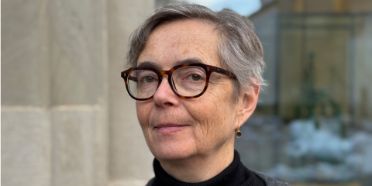Digital Capital
What digital practices do graduate students employ in the closing phase of their training at art universities? Where did they learn these practices, and how are they evaluated? How do these digital practices impact on their student selves?
Factsheet
- Schools involved Bern Academy of the Arts
- Institute(s) Institute Practices and Theories in the Arts
- Research unit(s) Art as Research: artistic creation and epistemologies
- Funding organisation SNSF
- Duration 01.12.2018 - 30.11.2020
- Head of project Prof. Dr. Priska Gisler
-
Project staff
Anna Maria Hipp
Ryffel Priska
Eva Allemann
Laura Hadorn - Partner University of Warwick
Situation
In study programmes at universities of the arts, increasing discussions can be observed about the relationships between digital and analogue practices, between technological standards and the artistic idea, and between university offerings and individual action orientations. All three strands of this discussion are linked to the digital transformation in tertiary education, which, given the practice-based nature of the arts disciplines, is closely related to digitisation processes in society itself. This is why we are investigating what digital practices are employed in the education at art university levels (focussing on Master programmes for contemporary art practice, design and art education), and how these have an impact on the students’ selves. Let it be noted, that we use a very broad concept of the “digital”, which we understand to encompass technological skills, media, devices, works and products.
Course of action
As our starting point, we assume that Bourdieu’s theory of capital (1982, 1985) must be able to be expanded to incorporate the dimension of a digital capital; accordingly, we have formulated the following research idea. We shall observe students’ final projects in the three study programmes ‘contemporary art practice’, ‘design’ and ‘art education’ in order to investigate what digital practices these students employ. What competences and knowledge do they draw on here? How do their lecturers, mentors and juries assess their work? This study is based on the fundamental understanding that subjective experience and perception create meaning (in the logic of practice), and that this meaning is itself generated, as it were, by expertise and actions. We use a combination of methods, including qualitative interviews and observations, to focus on the subjective experiences of students during their work on their final projects; we hope, thereby, to gain evidence about the presumed modes of action of digital capital in education programmes at universities of the arts.
Result
The primary objective of this explorative study is to contribute to investigations as to whether differences in the ordering and hierarchisation of social space can be perceived with regard to the existence, utilisation and circulation of a digital capital. We thereby aim to reach findings about the connections between the digital transformation of society and the social opportunities and possibilities of action on the part of students and universities of the arts.
